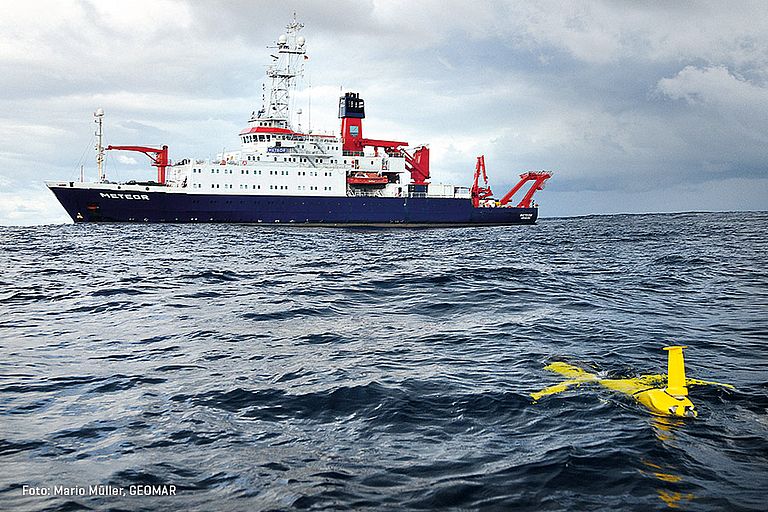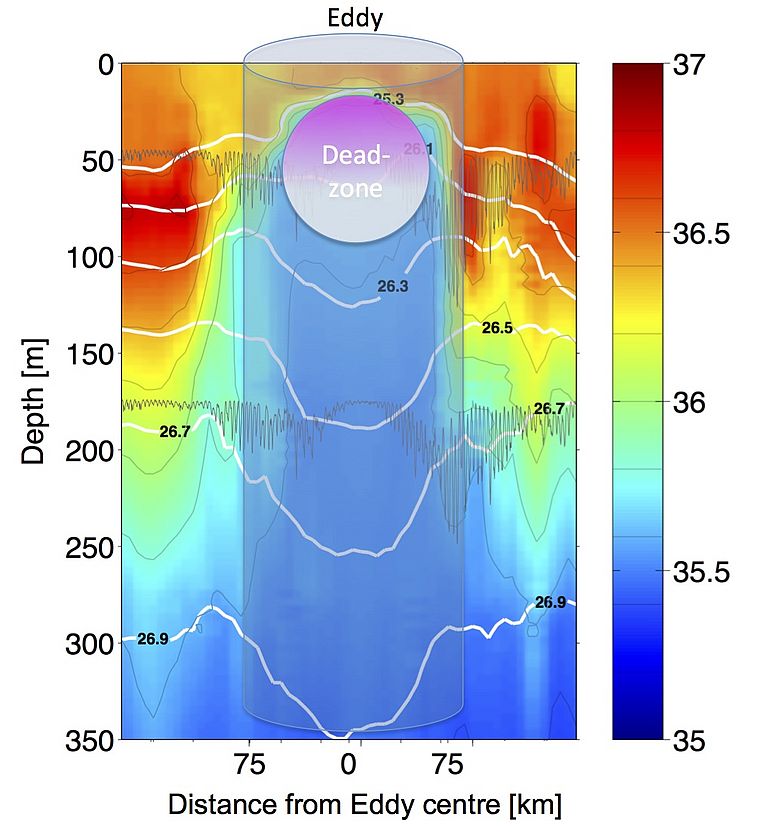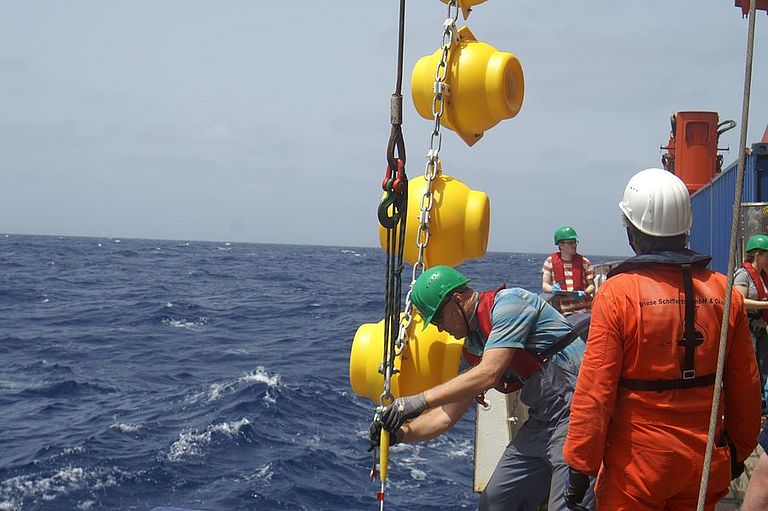Image of the month: November 2018
The research vessel METEOR and an oceanographic glider
Our image of the month November shows the research vessel METEOR and an oceanographic glider in the waters off the Cape Verde Islands. Gliders are autonomous platforms for measuring sensors that collect important basic data such as temperature and salinity from the upper 1000 metres of the ocean. On a zigzag course, they glide back and forth between the maximum diving depth and the surface.
As they are much smaller and more flexible than research vessels, they can measure large ocean areas cost-effectively and efficiently. In this way, they considerably extend the radius of action of scientists on board or ashore.
A good example of the successful cooperation between the METEOR and gliders is the tracking and sampling of an oxygen-free eddy in 2014. Such eddies form off the West African coast and reach diameters of up to 100 kilometres. From their area of origin, they slowly migrate westwards until they dissolve in the vastness of the Atlantic Ocean.
From the coastal areas they take a lot of nutrients and plankton with them. When the plankton organisms die, bacteria decompose the organic material and consume oxygen. Since there is hardly any exchange between the inside of the eddy and the surrounding water, the oxygen levels in the eddy drop to almost zero.
However, these facts are only known because the Cape Verde Ocean Observatory recorded extremely low oxygen levels around the island for the first time in 2010. When the scientists became aware of this, they observed the area attentively. In 2014, they succeeded in precisely measuring such an eddy for the first time using a combination of satellite observation, ship based sampling and glider measurements. The results have significantly expanded our knowledge of biogeochemical processes in the Atlantic.
Further information:
<link de entdecken artikel article extrem-sauerstoffarme-wirbel-im-atlantik-produzieren-treibhausgase _top abs-internal-link einen internen link im aktuellen>Press release "Extreme low-oxygen Eddies in the Atlantic produce Greenhouse Gases"
<link forschen fb1 fb1-po beobachtungssysteme gleiter _top abs-internal-link einen internen link im aktuellen>Gliders on the website of the research unit "Physical Oceanography"
The Cape Verde Ocean Observatory
The research vessel METEOR on the website of the "Leitstelle Deutsche Forschungsschiffe"





